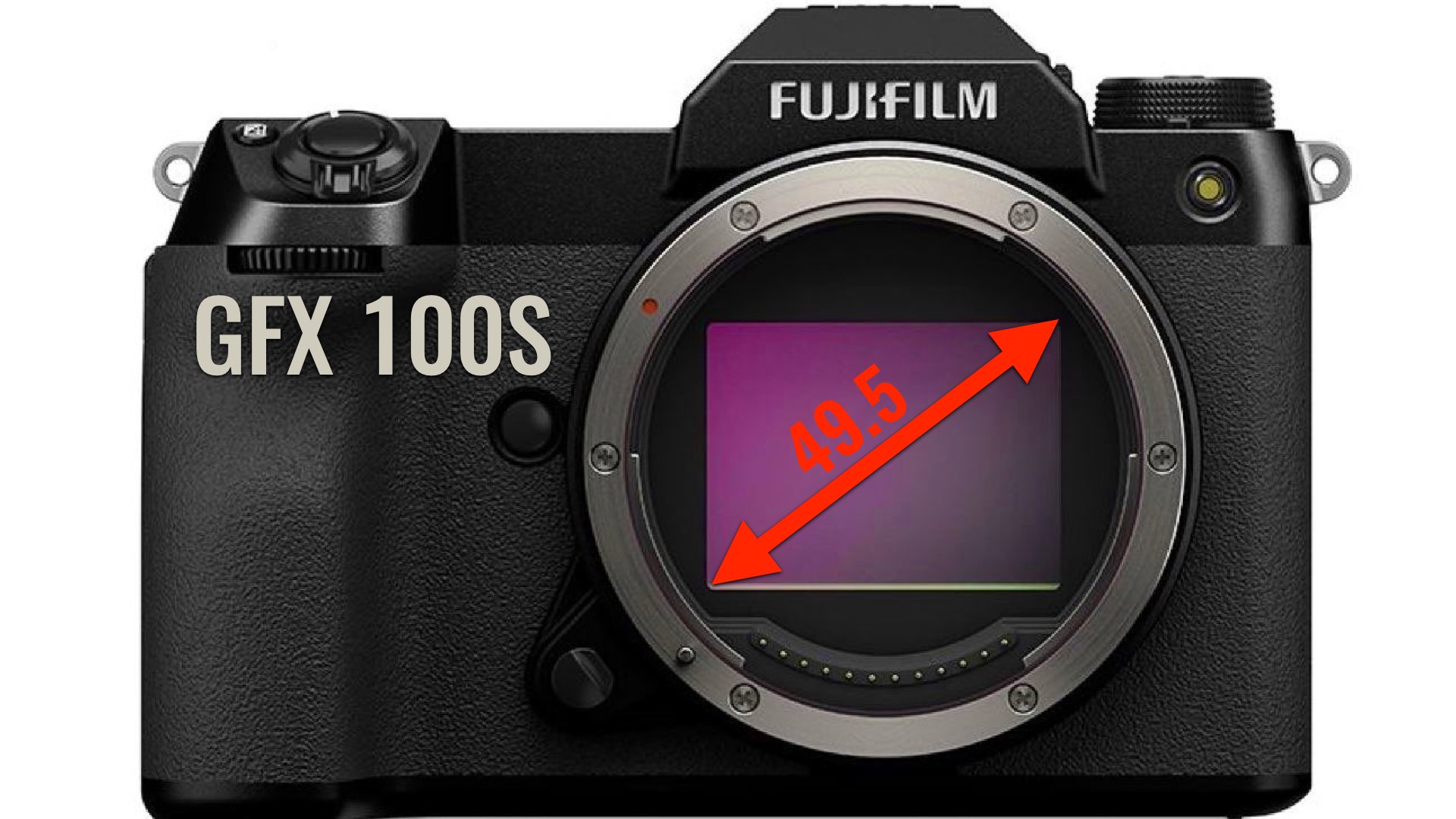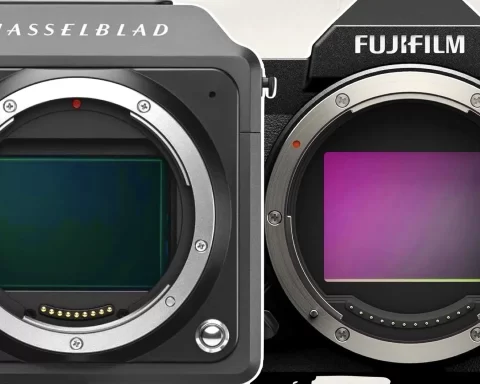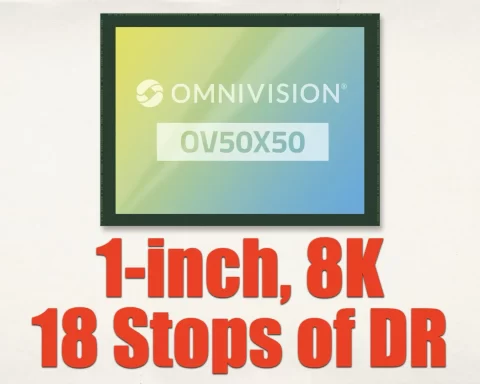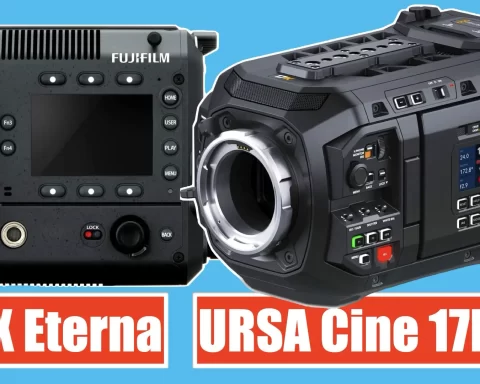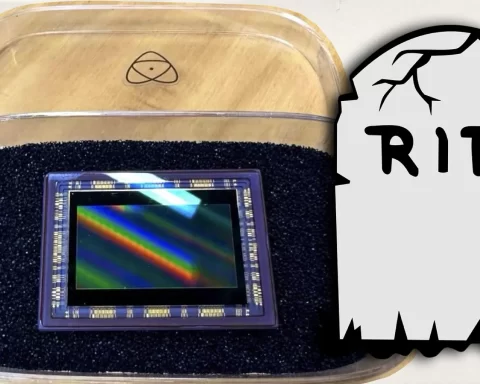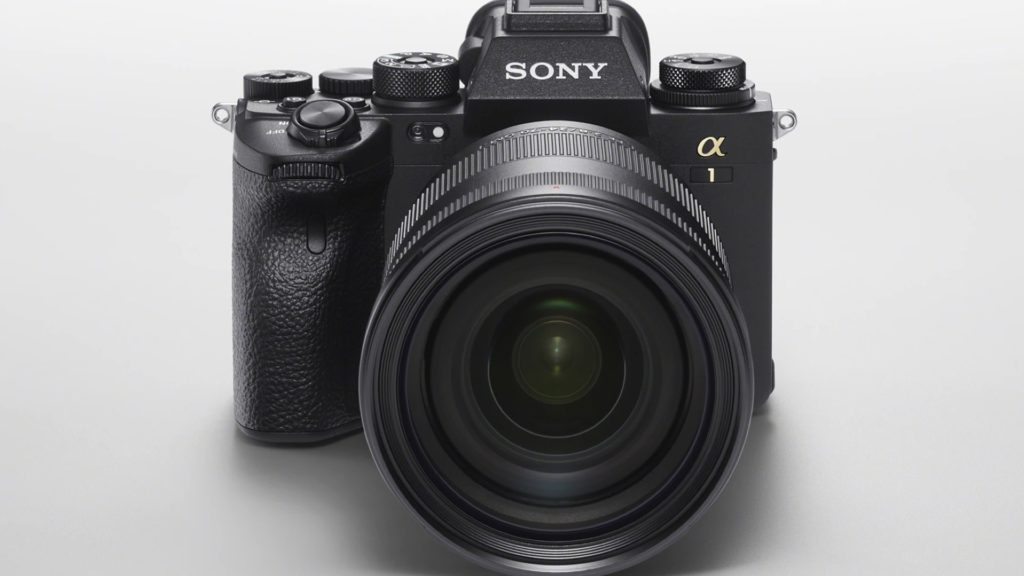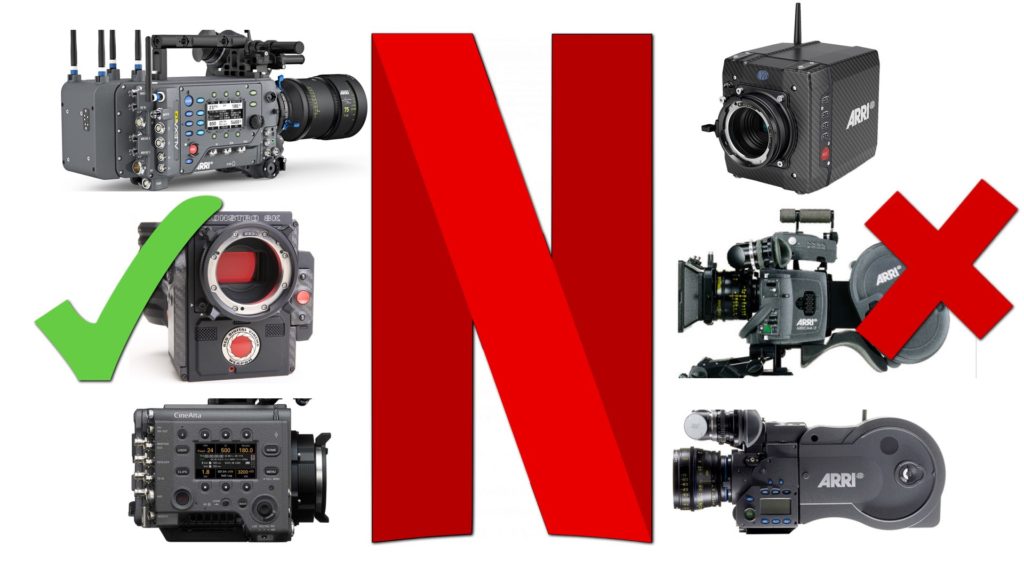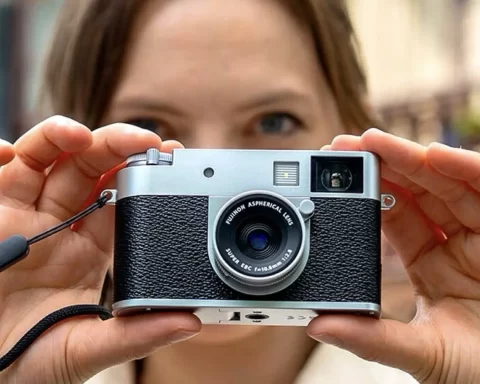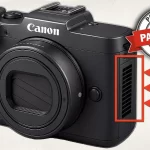In this article, we’ve concentrated all known data about the anticipated medium format compact camera, Fujifilm GFX 100S, which is the small sister of the mighty GFX 100. The 100S will be released at the end of February (Update: The camera has just officially announced). The camera includes many powerful and essential features for filmmakers. Moreover, Fujifilm GFX 100S main advantage is its medium format sensor-packed within a tiny robust body.
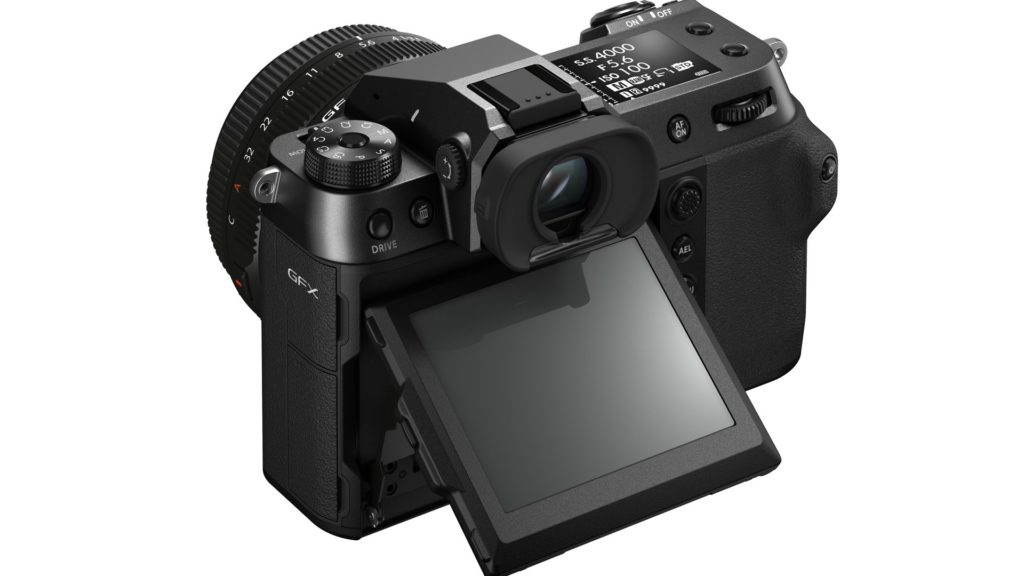
Fujifilm GFX: Medium format for the masses
For now, the GFX series that specializes in medium format sensors consists of three models: the Fujifilm GFX100 (102MP flagship that is capable of 4K shooting mode), Fujifilm GFX 50S (51.4MP), and Fujifilm GFX 50R (a smaller, lighter version of the GFX 50S), which both of them are dedicated for HD shooting. The goal of the GFX series is to allow the privilege of medium format shooting (stills and videos) to the masses. Now, this ability is being further developed with a new GFX model (hasn’t announced yet) that holds impressive capabilities for filmmakers regarding large format cinematography. This model is titled GFX 100S (S for small) and it constitutes a compact version of the mighty GFX 100. The specs, details, and images below were reported and posted first by Nokishita.
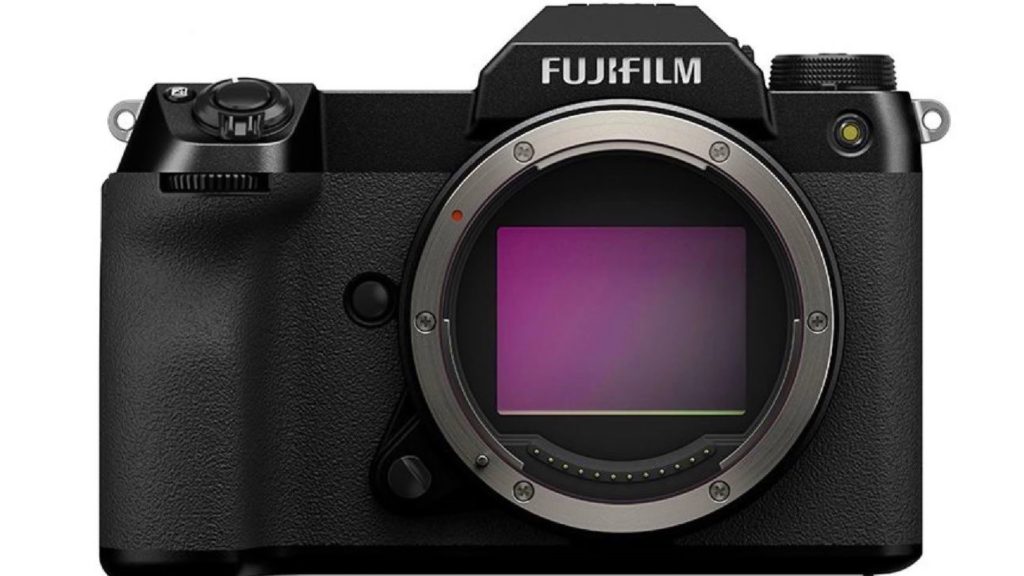
Medium format sensor: 4K ProRes RAW externally
The Fujifilm GFX 100S is armed with a medium format sensor that is larger than a full-frame (see slide below). The number of effective pixels is 102 million, and the size is 43.8mm x 32.9mm (49.5 mm diagonal). This 102MP with the back-illuminated CMOS sensor can record 4K/30p footage in 10-bit F-log or 12-bit Apple ProRes RAW externally via Atomos Ninja V. There also might be an option to record Full HD / 240P for high-speed shots.
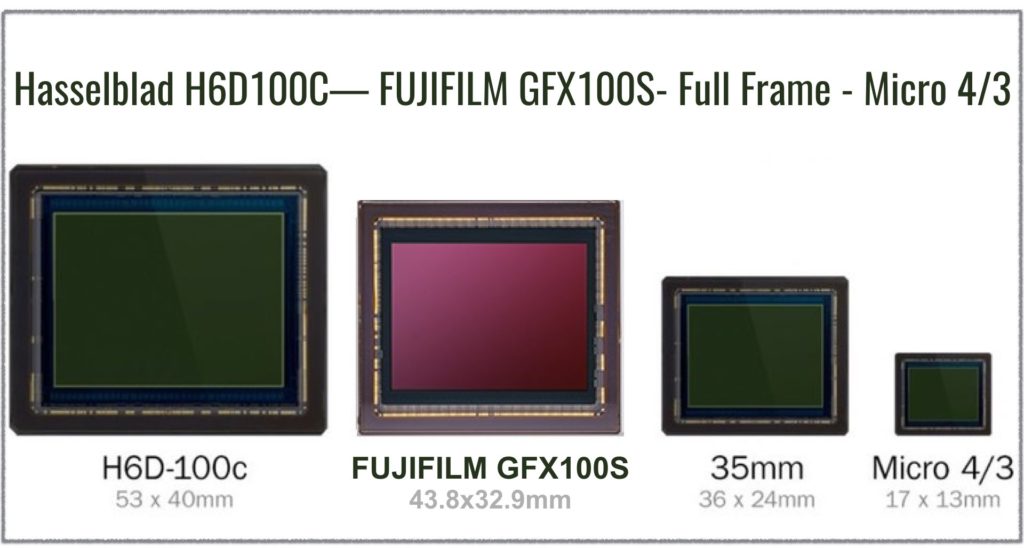
File size / Frame rate / Recording time
- 4K (4096 x2160) 29.97p / 25p / 24p / 23.98p 400Mbps/200Mbps/100Mbps up to Approx. 120min
- 4K (3840 x2160) 29.97p / 25p / 24p / 23.98p 400Mbps/200Mbps/100Mbps up to Approx. 120min
- Full HD (2048 x1080) 59.94p / 50p / 29.97p / 25p / 24p / 23.98p 200Mbps/100Mbps/50Mbps up to Approx. 120min
- Full HD (1920 x1080) 59.94p / 50p / 29.97p / 25p / 24p / 23.98p 200Mbps/100Mbps/50Mbps up to Approx. 120min
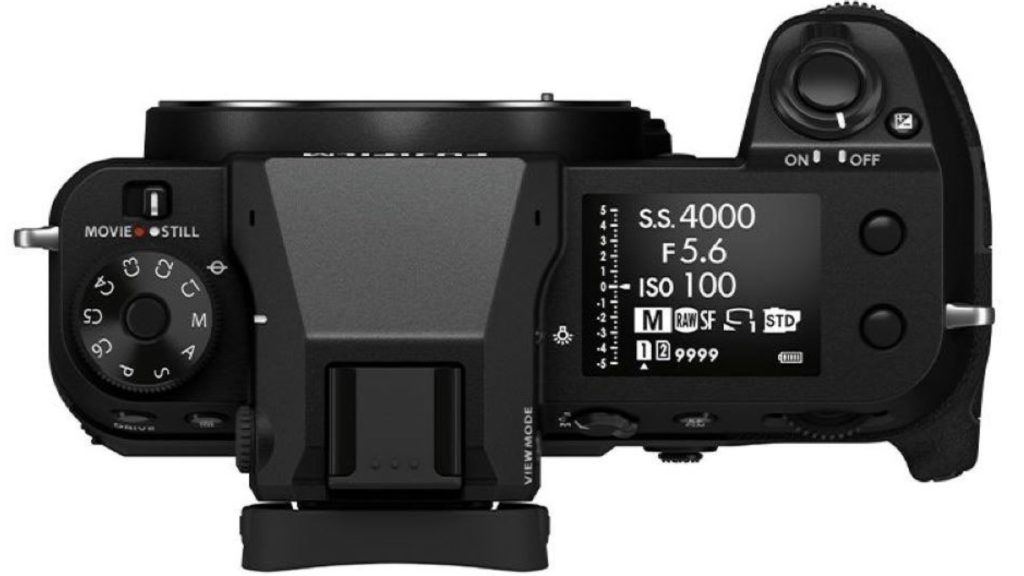
Updated autofocus algorithm
An updated autofocus (AF) algorithm implemented in the GFX 100S brings subjects into focus in as quickly as 0.16 sec, even in light levels as low as -5.5EV. This performance is strengthened by the presence of phase-detect autofocus pixels across nearly 100% of the frame, resulting in complete precision regardless of where the subject is. Combined with responsive tracking and reliable Face/Eye Detection, GFX 100S lets large format photographers enjoy reliably accurate AF, even in low-contrast situations. However, there’s no info if this AF algorithm will be activated in video mode.
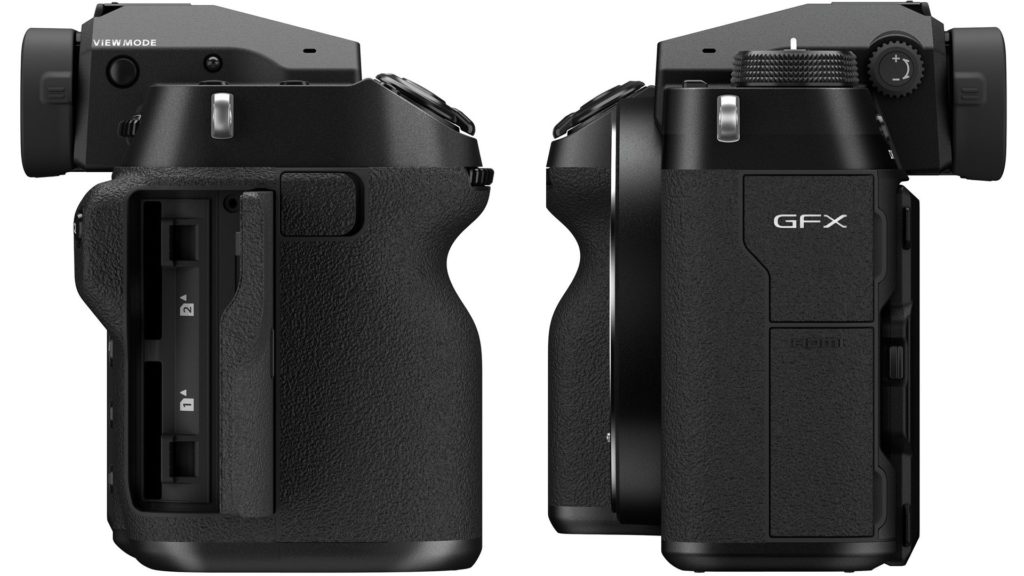
Structure, form factor, and IBIS
Accruing to rumors, the 100S is armed with a newly developed shutter and In-Body Image Stabilization (IBIS) system. While reduced in size, compared to their counterparts in GFX 100, both elements are designed to allow solid performance, with the new shutter capable of 5fps continuous shooting and the unique, five-axis IBIS now working in conjunction with GF Lens Optical Image Stabilization (OIS) to provide up to 6 stops of correction. Most probably, this IBIS will work in video mode as well. As for the build, is robust and moisture resistant (magnesium-alloy casing). It also contains a 3.0-inch Tilt-Type Touch Screen Color LCD Monitor. For the size, the 100S is reduced by 20% in volume and approximately 10% in mass from the same unit of the “GFX100”.
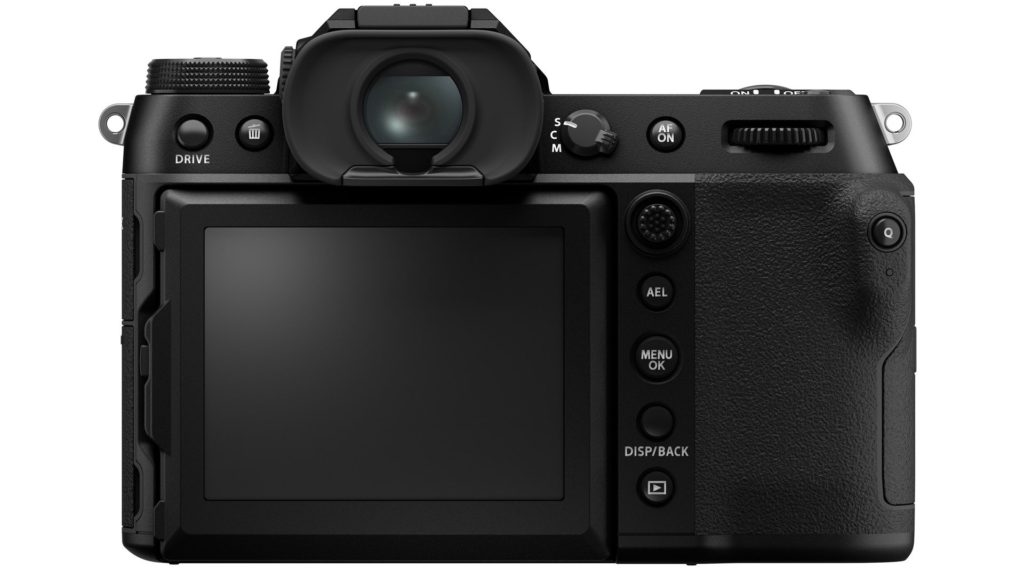
Price and availability
The Fujinon GFX 100S will be officially announced at the end of February. The estimated price is $6,000 which is not cheap, but it’s almost half the price compared to the flagship model.
Update: The camera has just officially announced. The price is $6,000 as expected. The model can be preordered on the B&H website.
Initial thoughts
When Sony’s and Canon’s goals are to elevate the resolution and sprint their way to the 8K world, it seems that Fujinon has decided to focus on medium format, which is larger sensors than full frame. The GFX series is not about resolution, but about sensor size. As for the 100S, there’s a change for product cannibalization of the GFX 100, since the new model offers similar capabilities packed in a more compact body with half the price. Eventuality filmmakers will have to choose between more resolution to more sensor’s real estate. What would you choose? 8K or larger sensor? Comment below.

